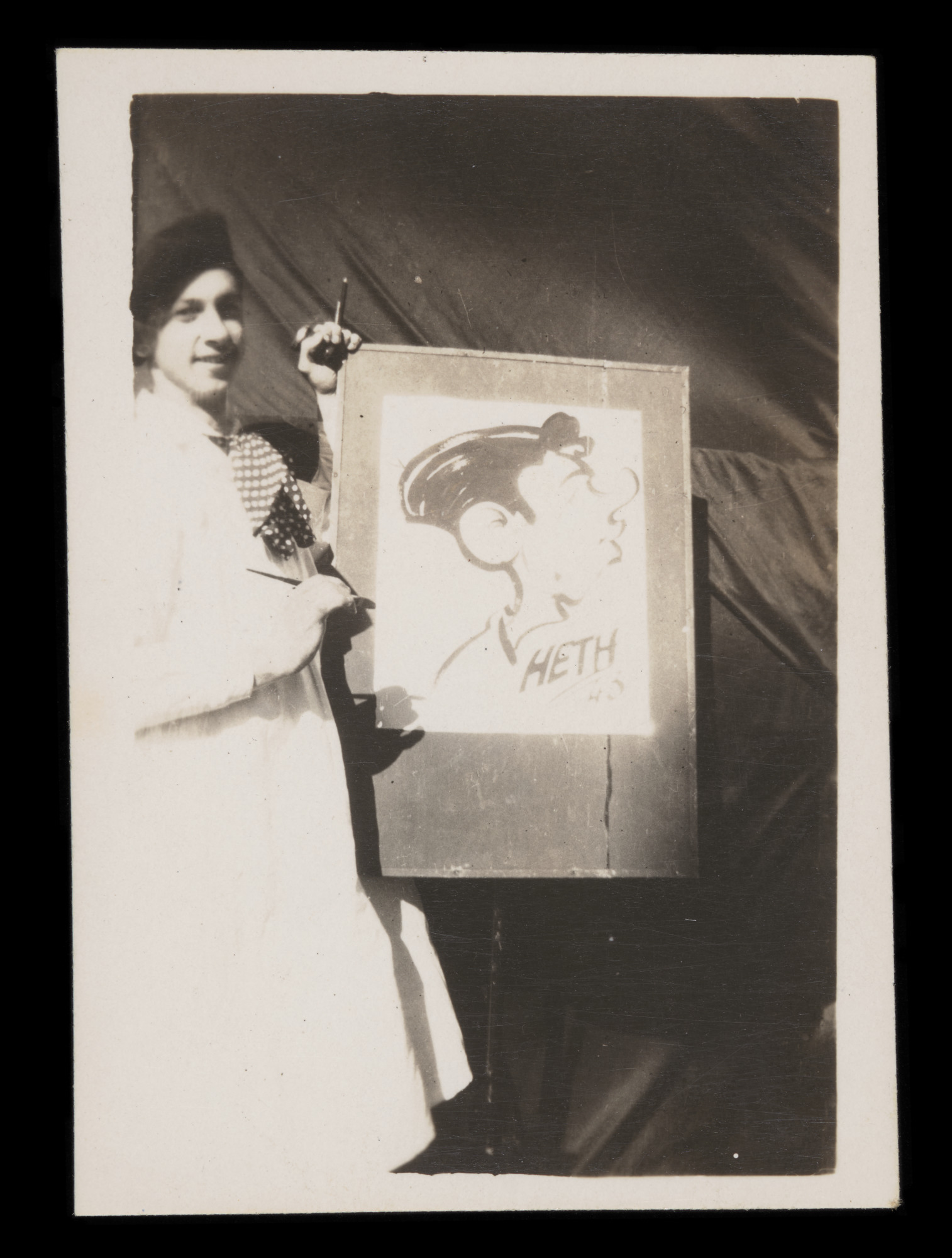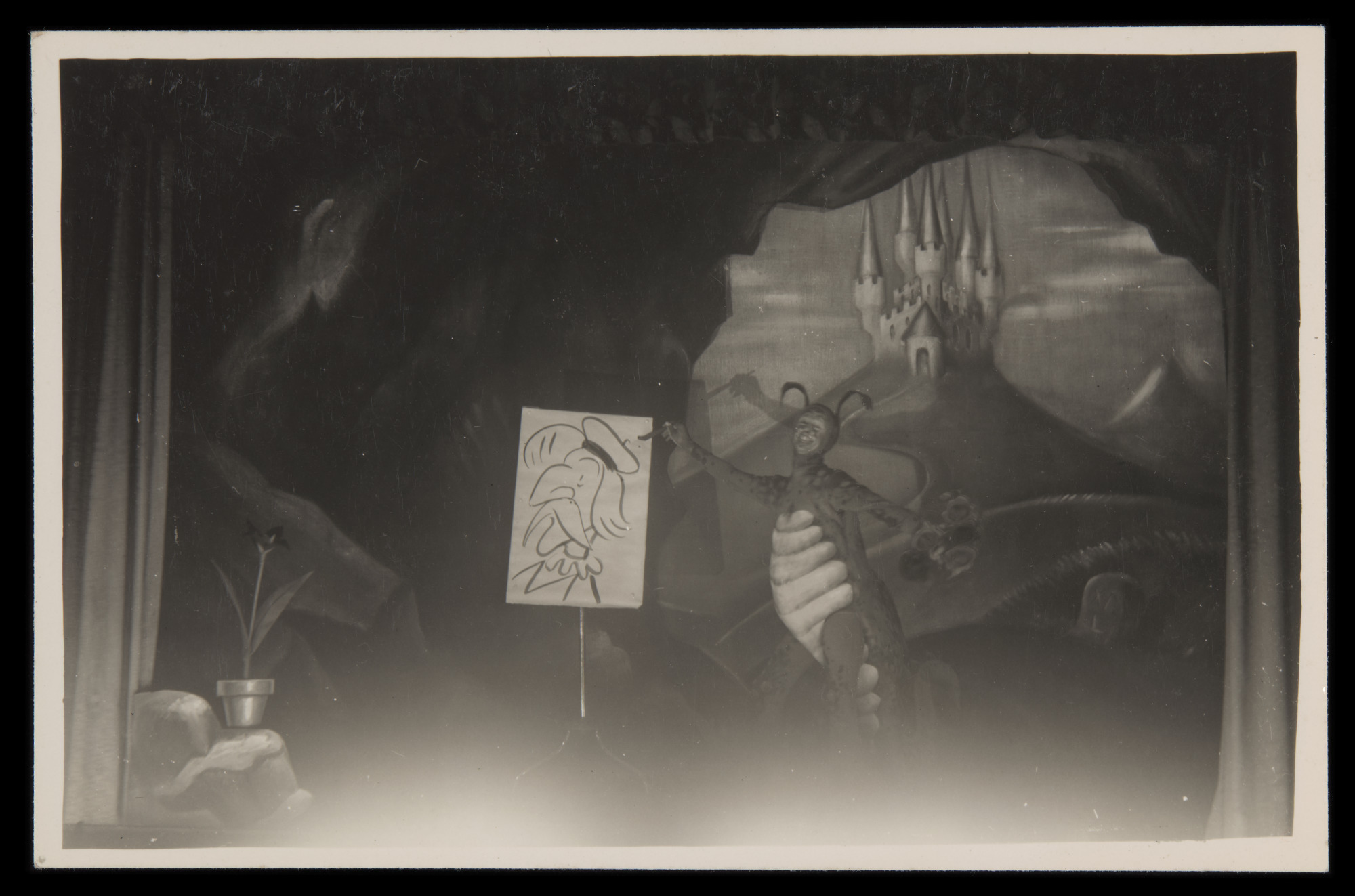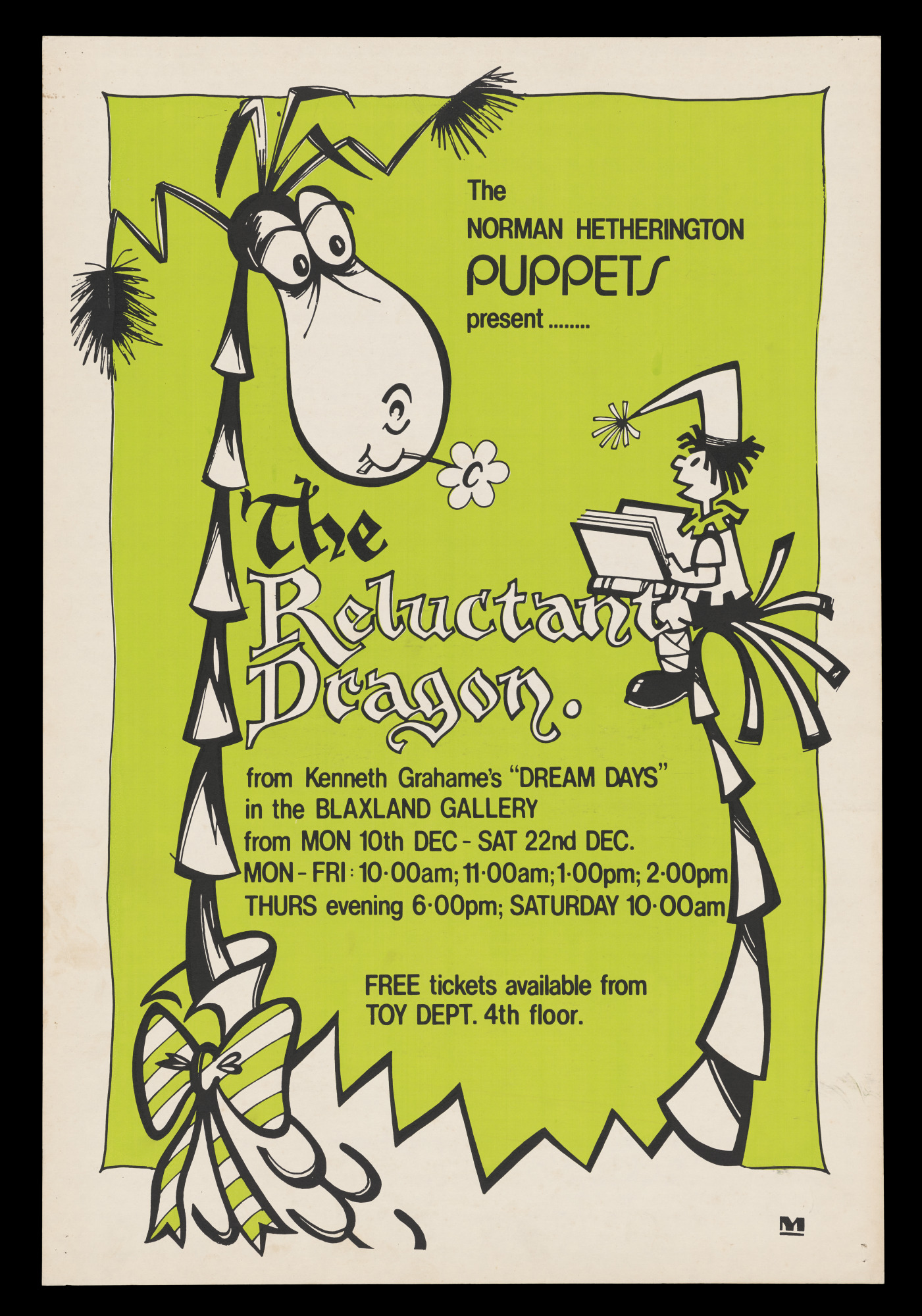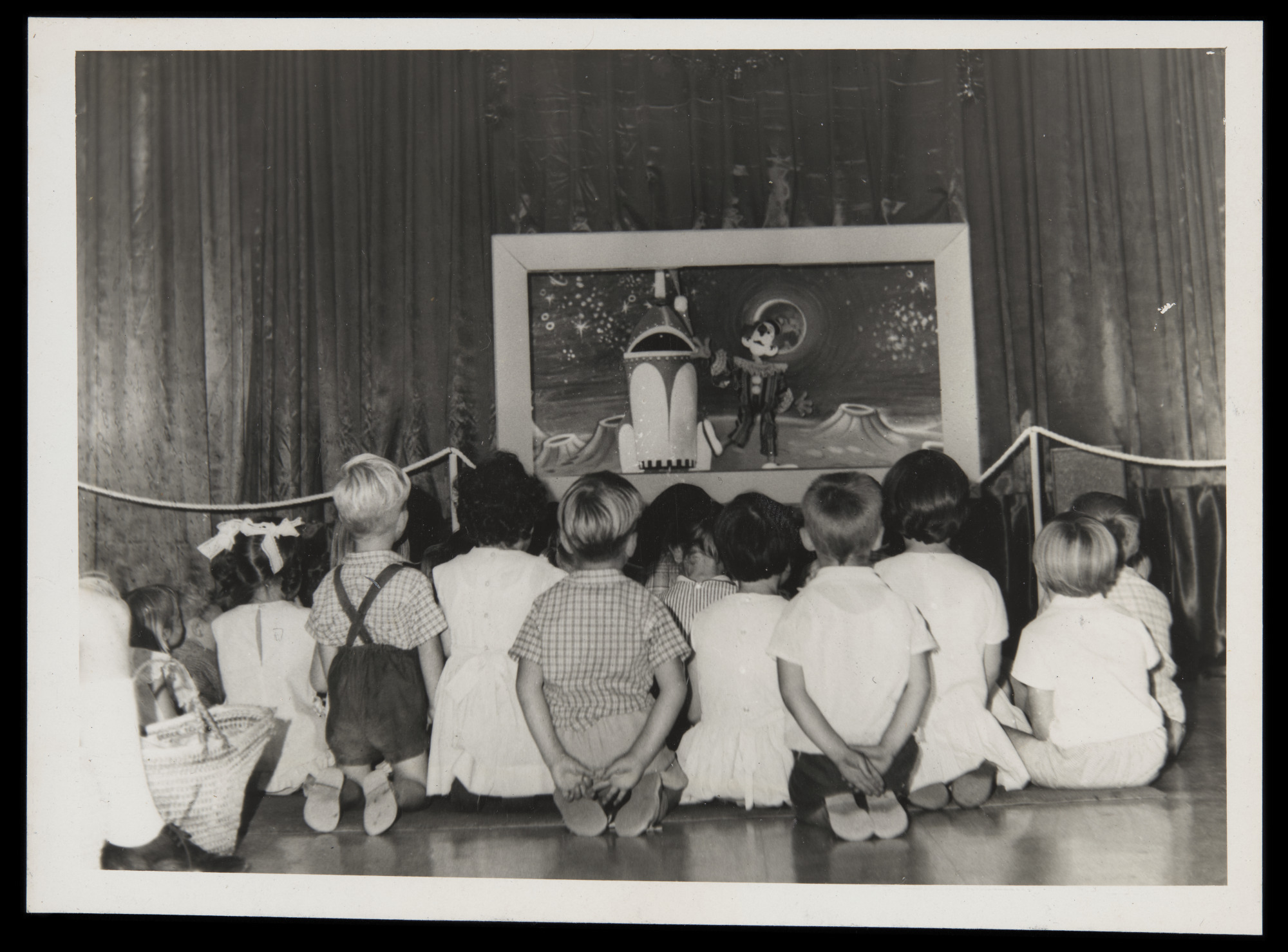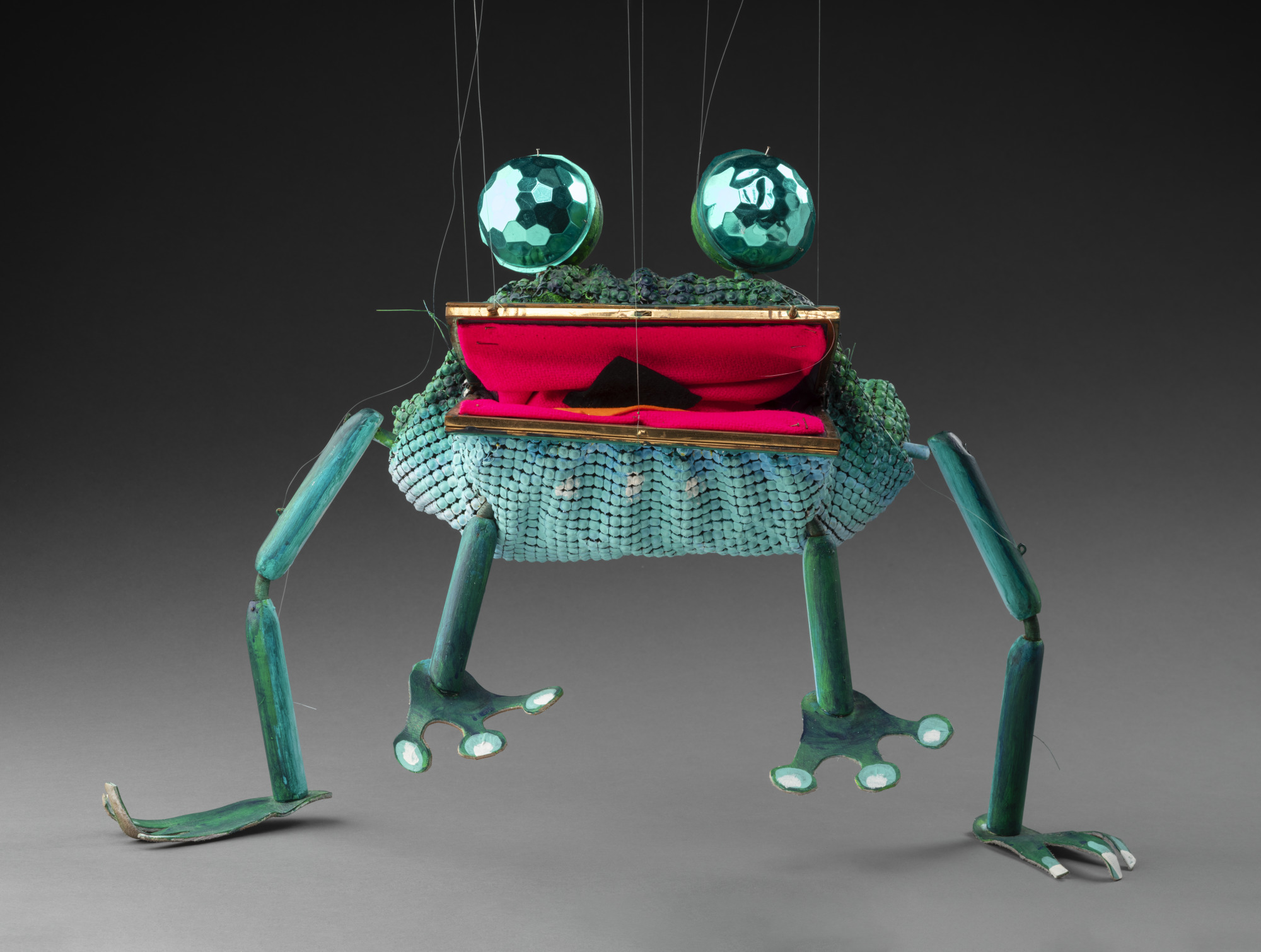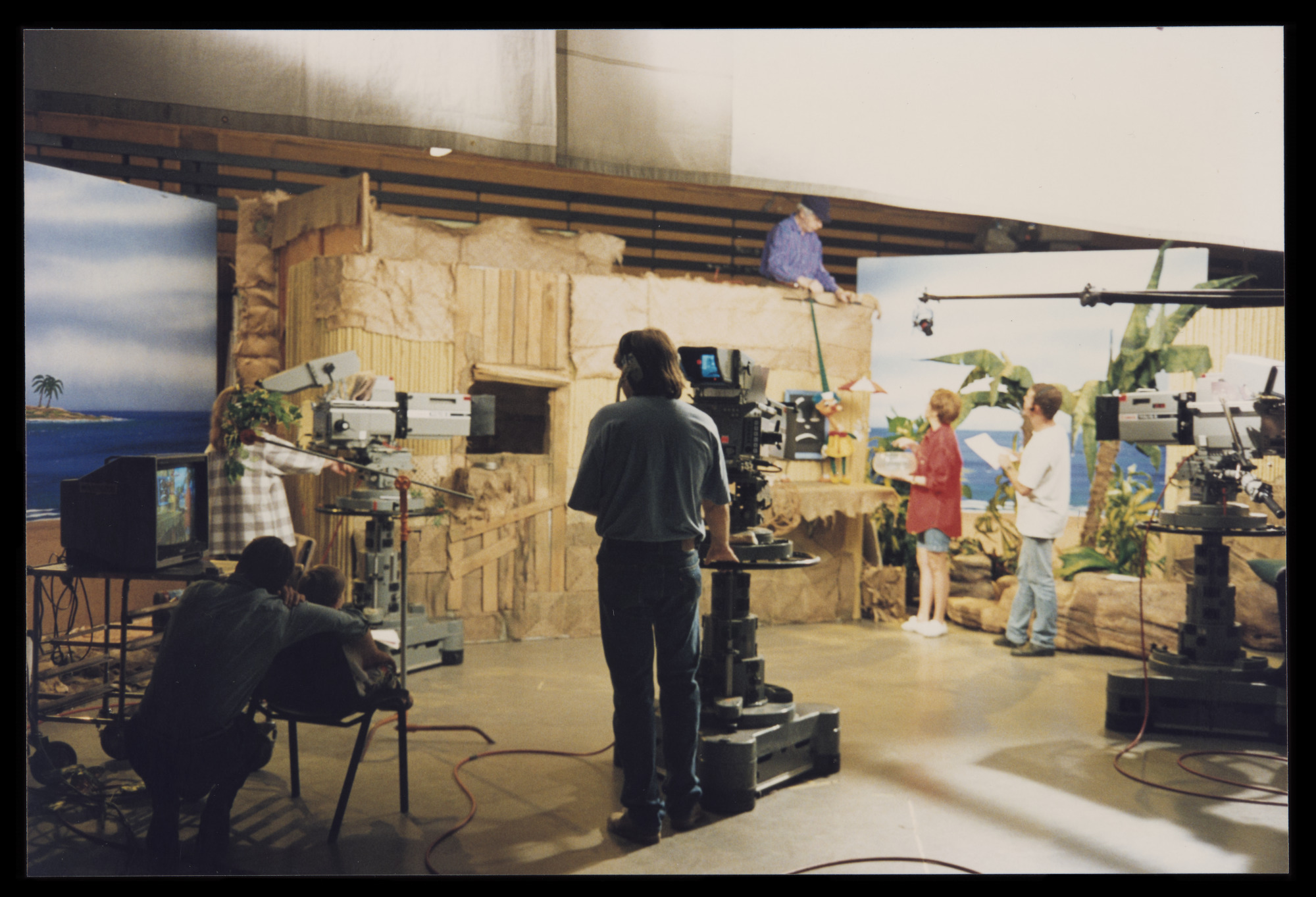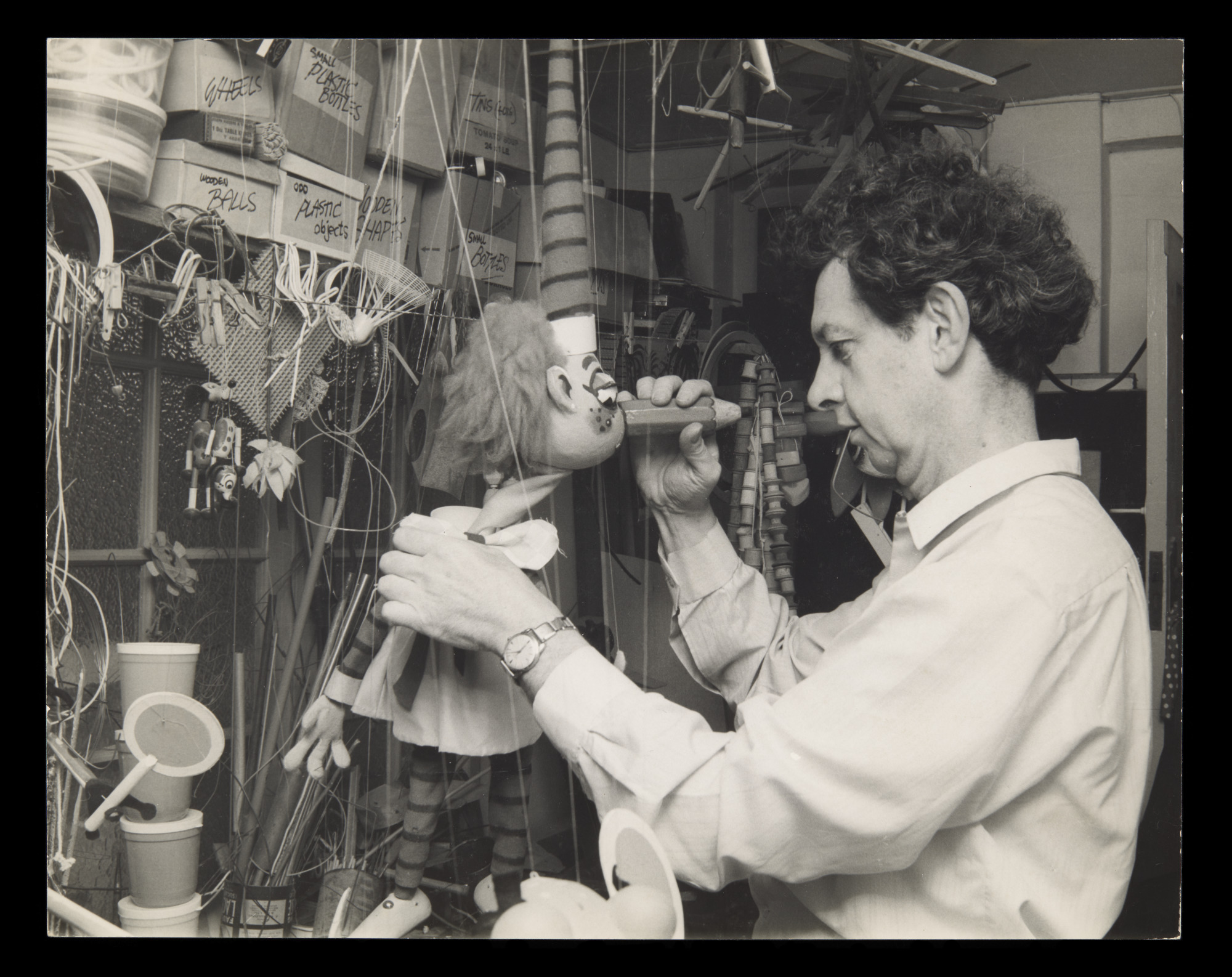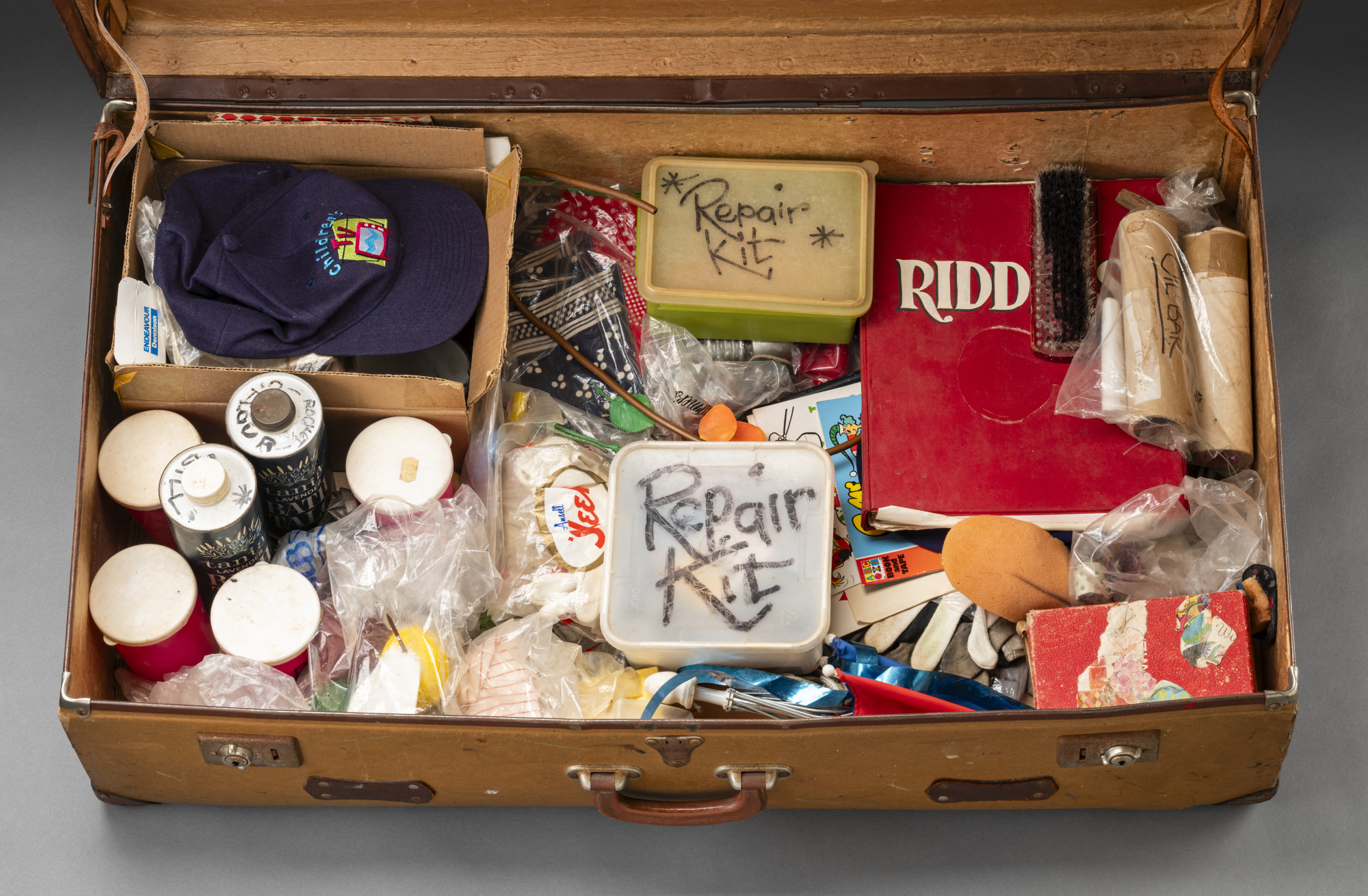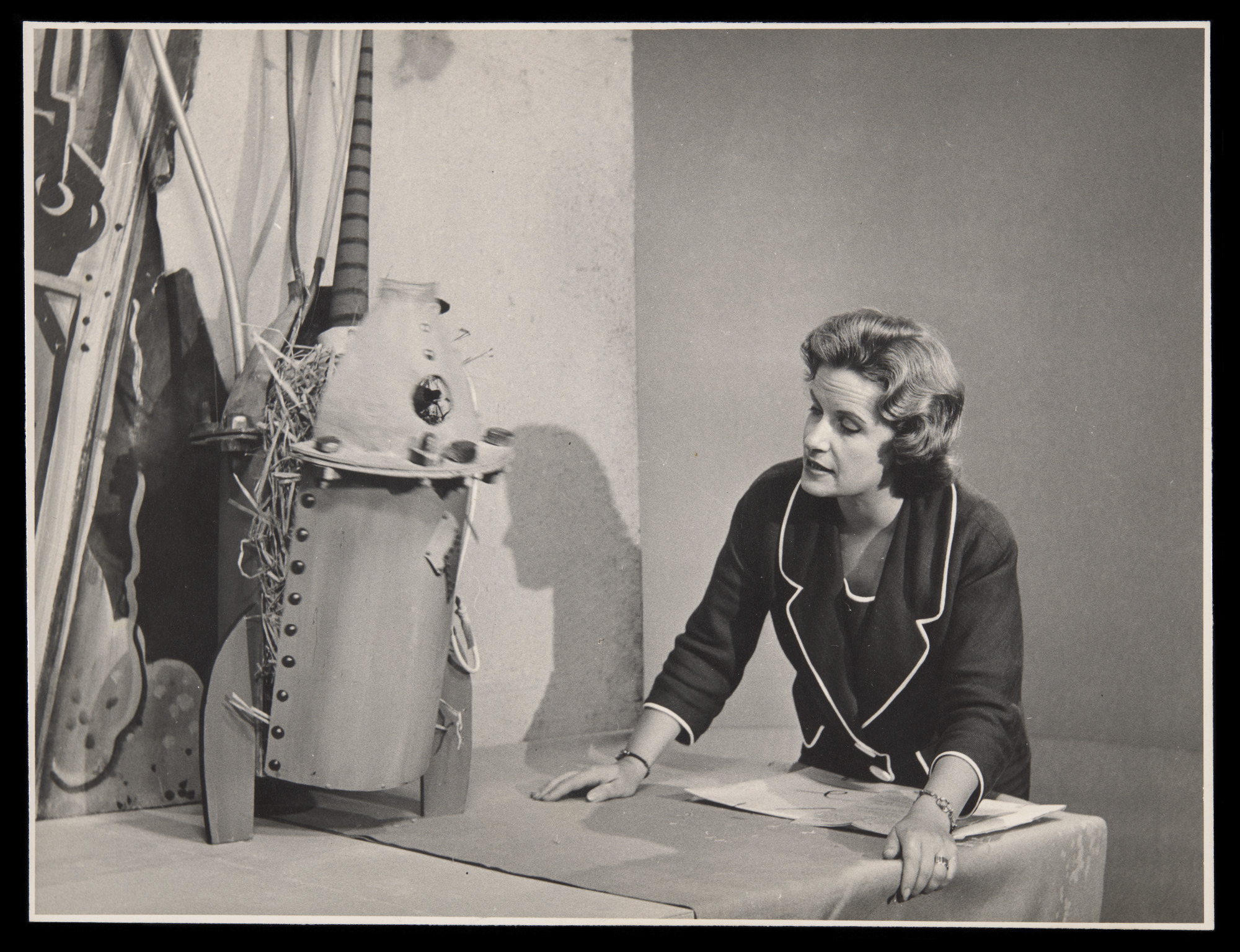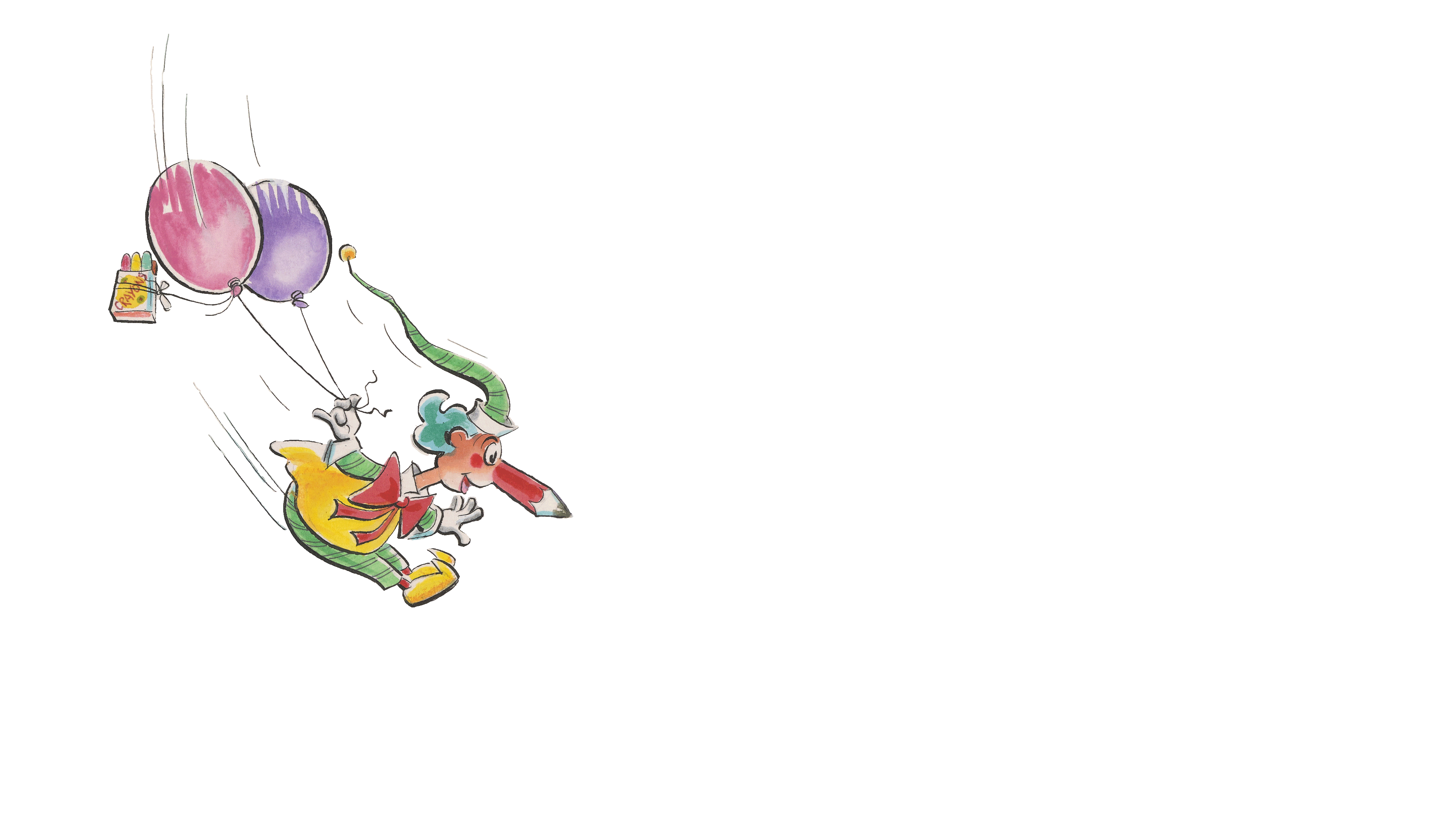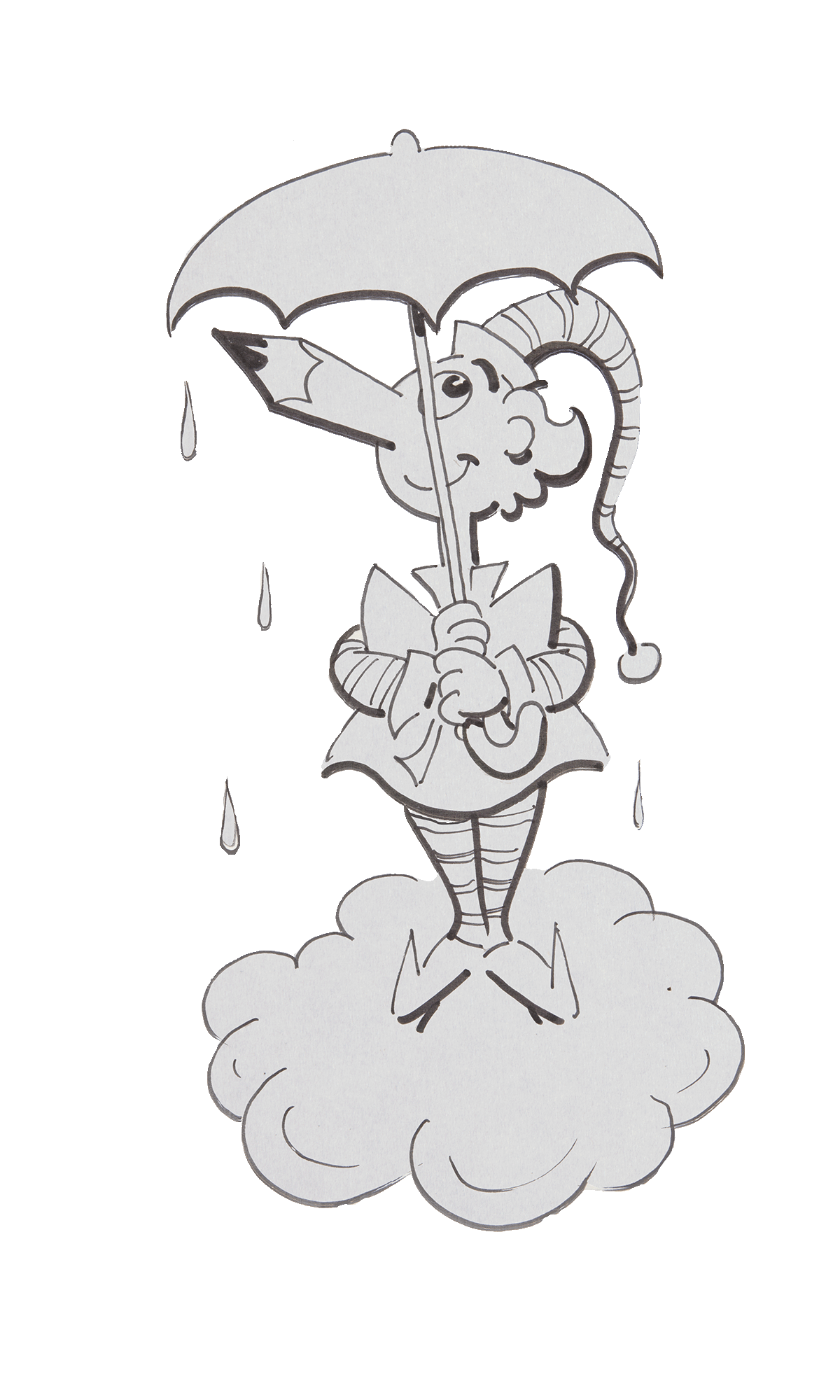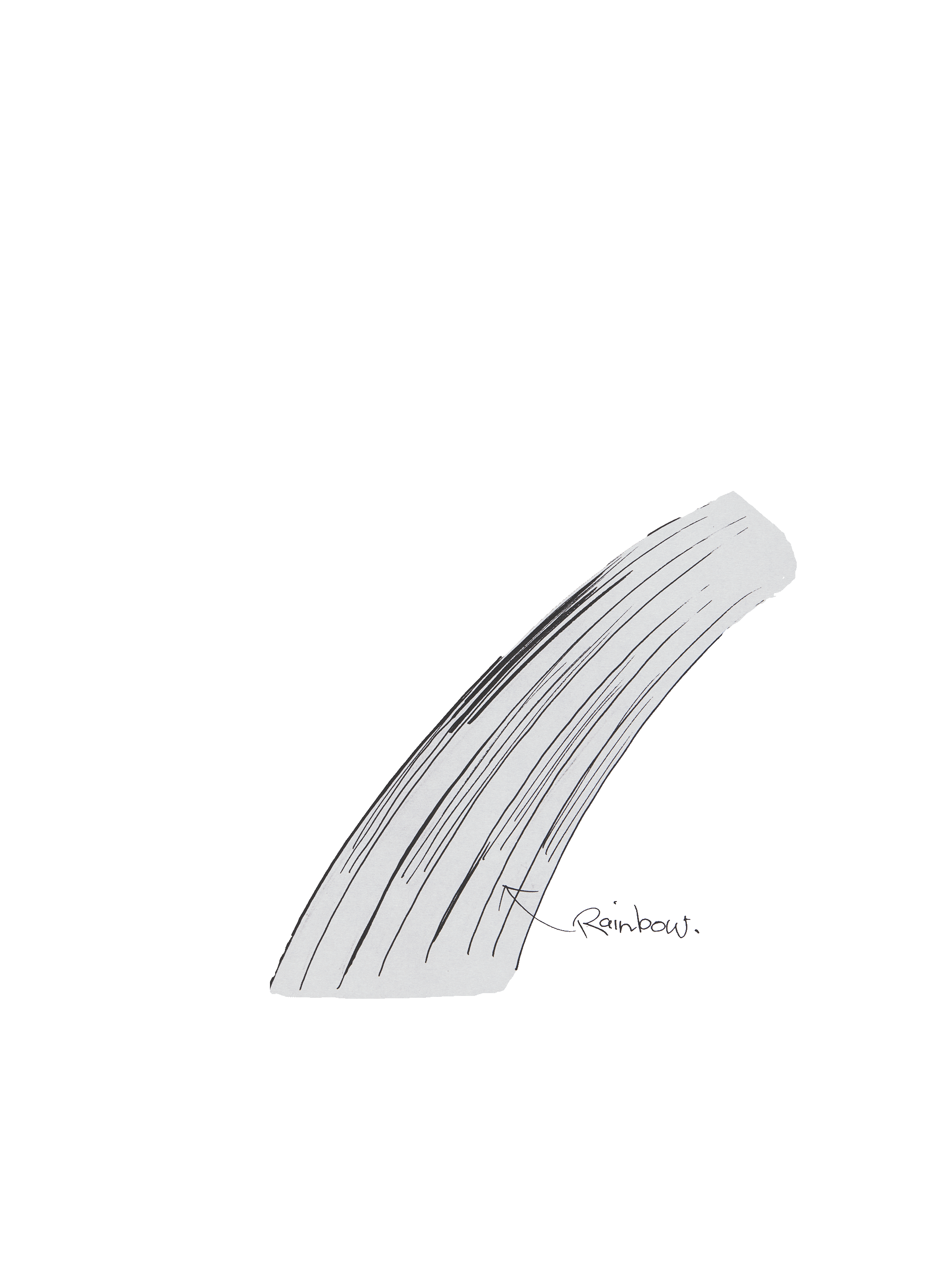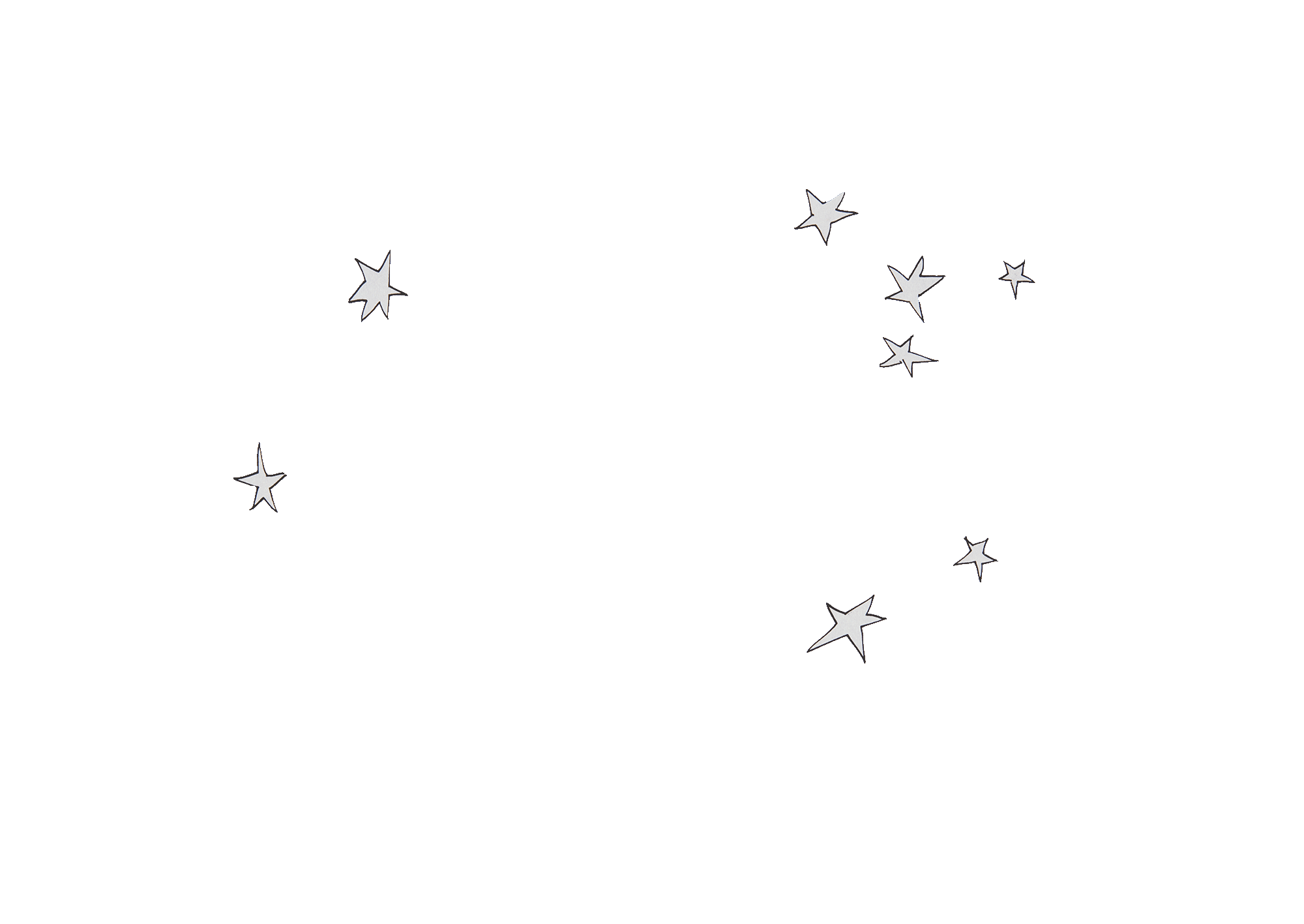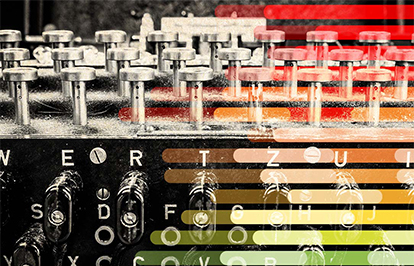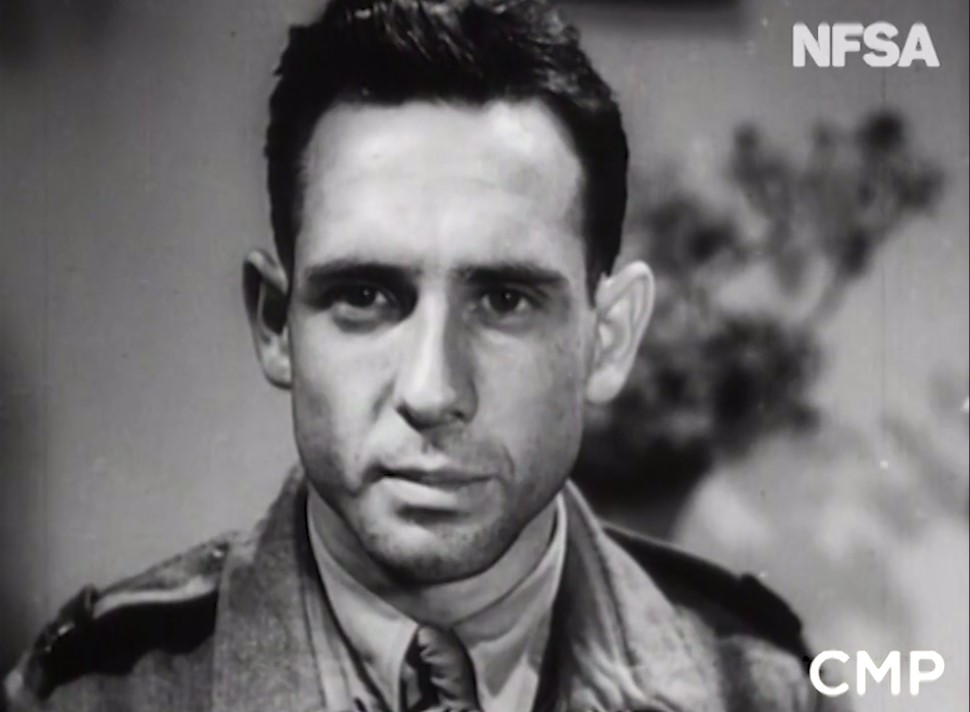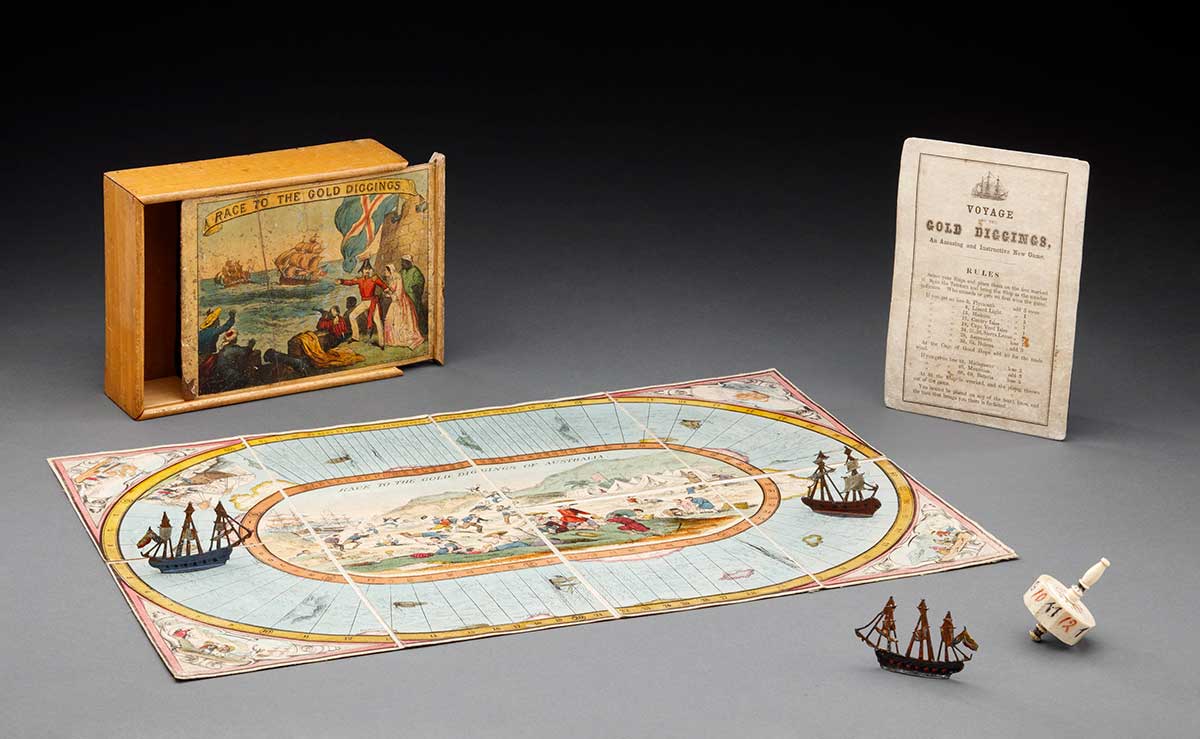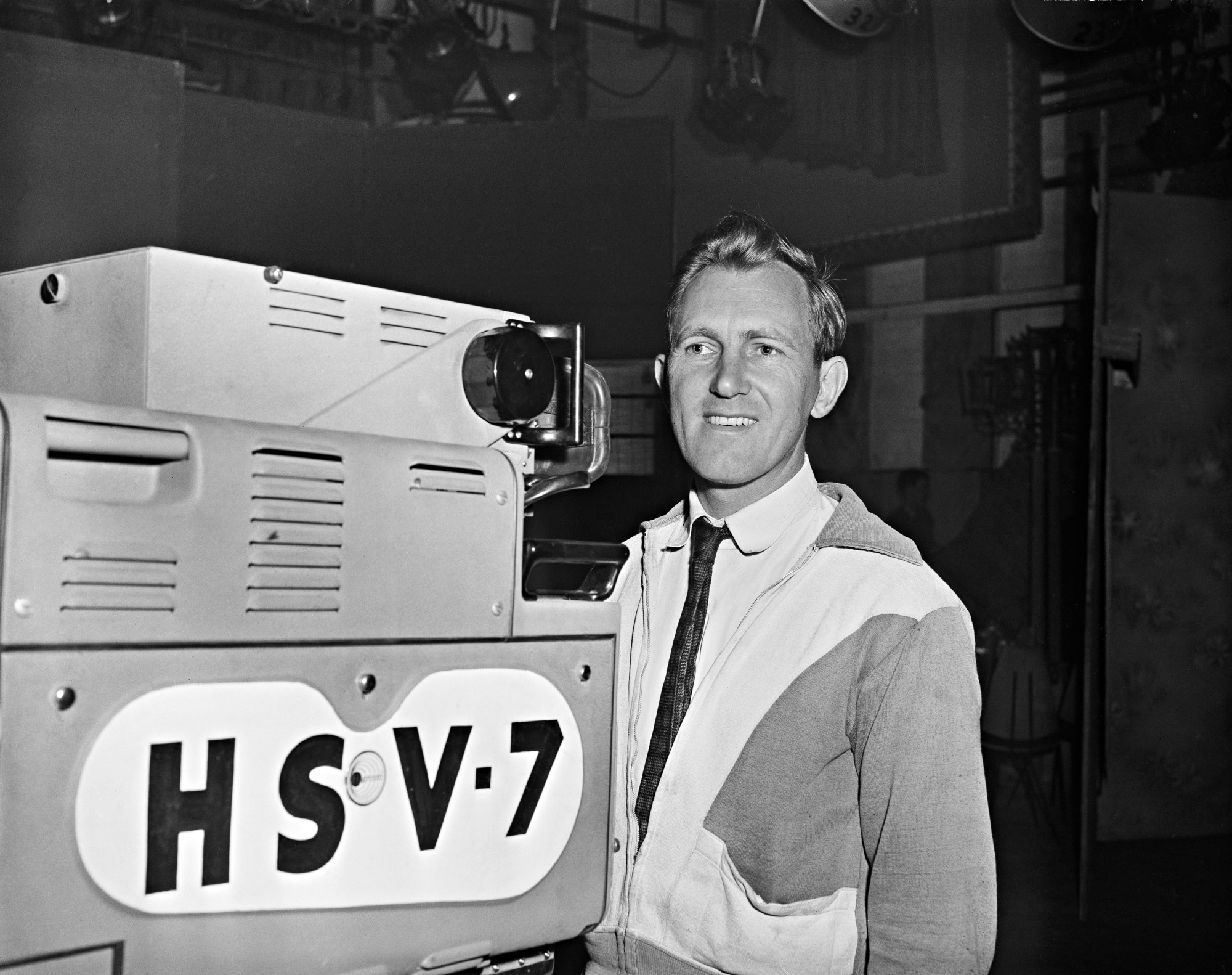Mr Squiggle and Friends
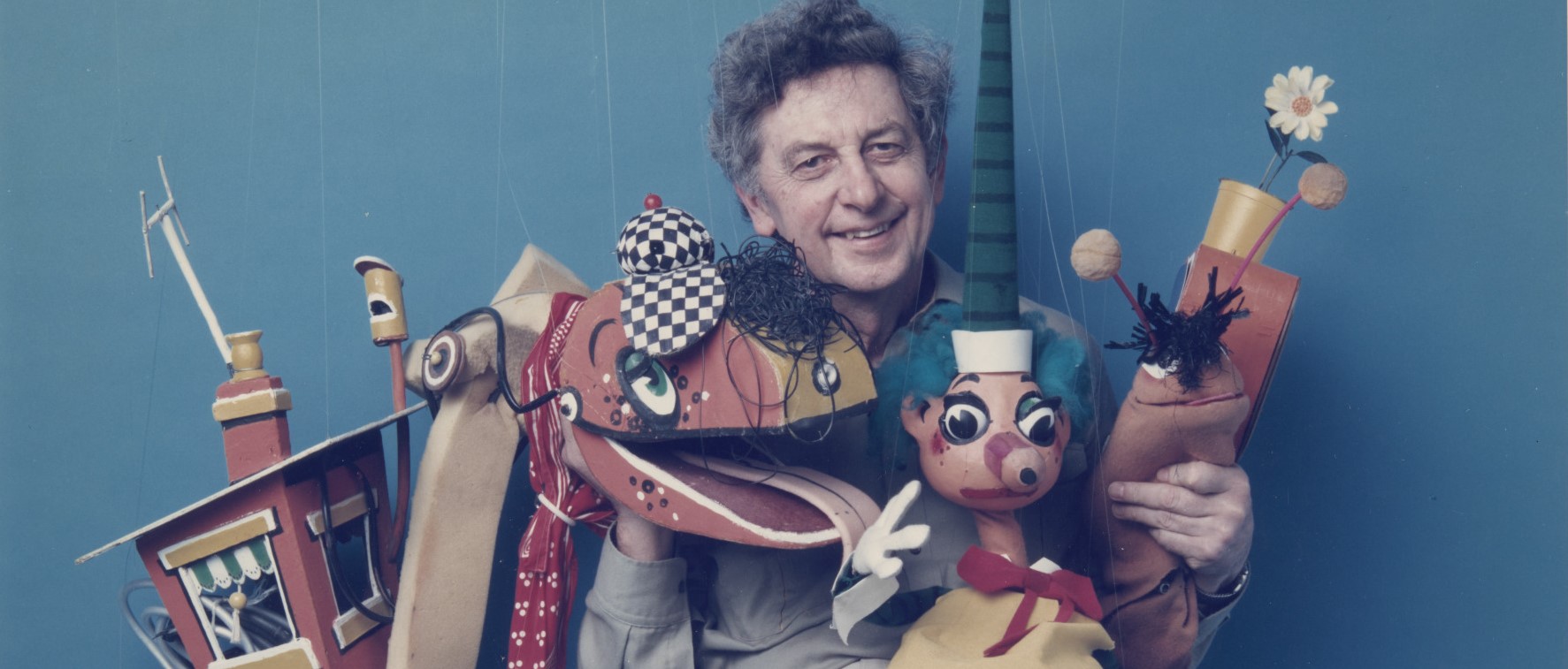
The Creative World of Norman Hetherington
Mr Squiggle and Friends was a much-loved children’s TV series that first aired on the Australian Broadcasting Corporation (ABC) in 1959 and continued for 40 years.
Behind Mr Squiggle’s playful charm was Norman Hetherington – the artist, cartoonist and puppeteer who brought him to life.
Cartoonist, performer and puppeteer
Before working in television, Norman entertained Australian and Allied troops during the Second World War, boosting morale through music, theatre and comedy performances. He became known for his ‘lightning sketches’, where he would start with a few random lines, add a few more lines and some colour, and then reveal a surprising new image.
Norman was also involved in amateur theatre. He wrote plays, designed costumes, made props and backdrops, and reimagined classic stories. In The Reluctant Dragon, Norman played the title role – a dragon with a scary reputation who was actually gentle and preferred painting and poetry over fighting knights.
Norman’s love of puppetry developed through his work with the Clovelly Puppet Theatre, where he learned how to stage puppet shows. From the 1950s to the mid-1980s, he performed puppet shows in Sydney department stores for large crowds during school holidays. He was passionate about recycling, often using everyday ‘junk’ to create unique puppets.
Mr Squiggle and Friends
The arrival of television in 1956 set Norman and his puppets on a new path. Someone from the ABC saw one of Norman’s popular Christmas holiday puppet shows and he was invited to join their television training school.
Norman’s love of drawing and puppets came together when he created Mr Squiggle, the puppet with a pencil for a nose who first landed on Australian television on 1 July 1959.
Every episode began with Mr Squiggle arriving in Rocket from 93 Crater Crescent, The Moon. He was gentle and imaginative but easily distracted, often wandering off on spacewalks.
Children from all over Australia sent in ‘squiggles’ or unfinished drawings, which Mr Squiggle transformed into creative illustrations during the show. Over the years, he completed more than 10,000 drawings!
The show was a family production, with Norman’s wife, Margaret, writing many of the scripts. Later, their daughter, Rebecca, joined the program as a presenter.
Today, Norman’s grandson Tom is a puppet maker and performer. Watch the video to see him bring some of his grandfather’s puppets to life.
Questions and creative activities
- Some photos of Norman’s work are in black and white, while others are in colour. Why do you think that is?
- Norman cared about reusing materials. Do you think digital art is good or bad for the environment? Why?
- Norman made his first puppet from an old bicycle tyre, following instructions from a magazine his father gave him. What kind of puppet could you make from recycled materials? Create your own puppet!
Norman’s creative work changed as he used new technology. Today, digital animation – like puppeteering – brings characters to life and entertains audiences. Try these activities using the digital tools suggested.
- Complete an original squiggle from Mr Squiggle and Friends in our digital drawing activity. Download your finished drawing and compare it with your classmates’ creations!
- Save and animate Hetherington’s artworks using an animation editor such as Canva, Adobe Express or Brush Ninja. You could also try colouring in the artwork and creating your own background. Teachers can look for tutorials online to help guide students through the process.
- Take the character you designed in activity 3 and bring it to life with stop motion animation using an editor like Clap Motion, Cloud Stop Motion or Kapwing. Teachers can look for tutorials online to assist.
Animation and Hetherington’s artworks
Share a photo or screenshot of any of your creations with us and our online community of teachers by tagging @nationalmuseumofaustralia on Facebook or Instagram!







